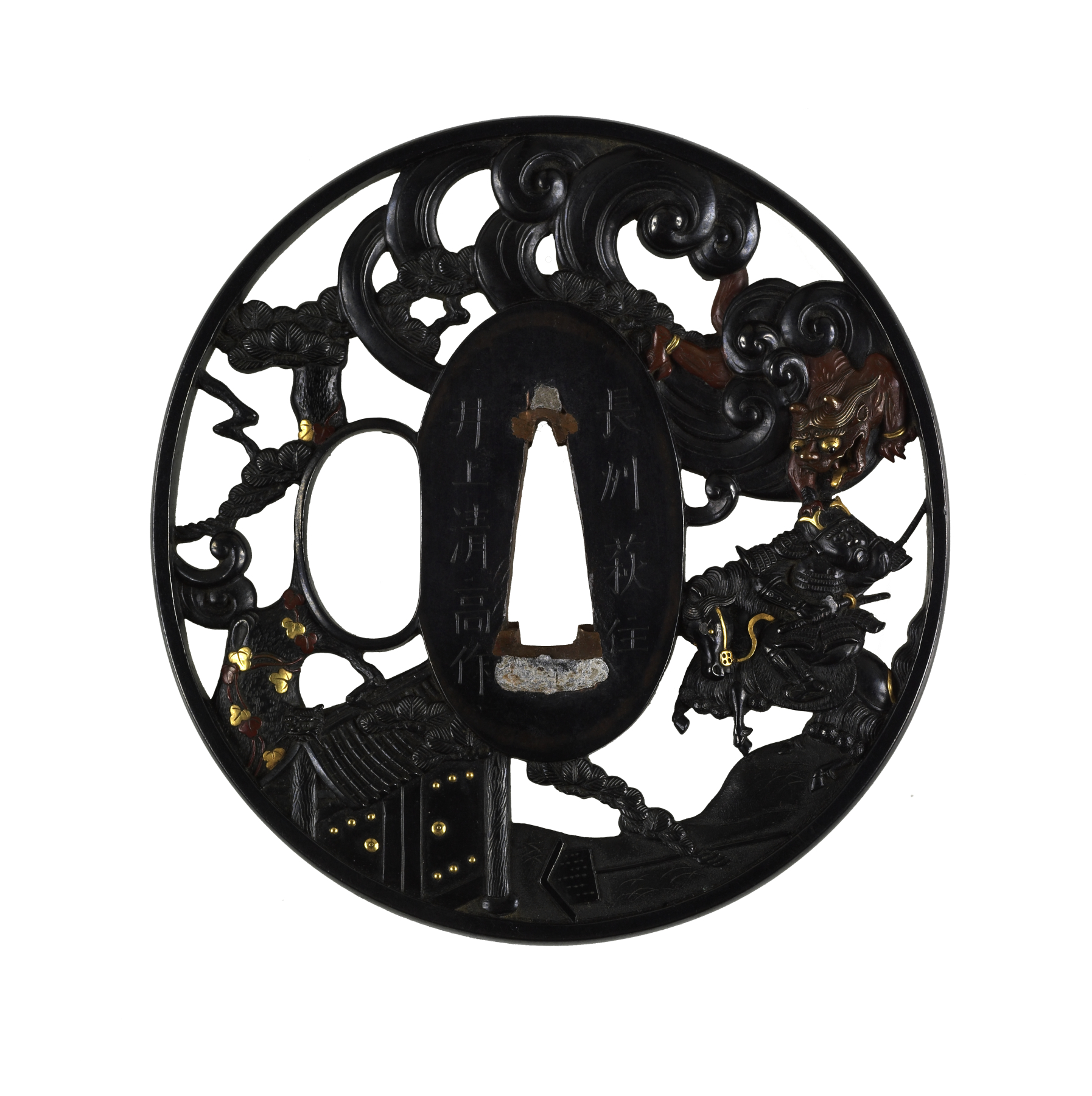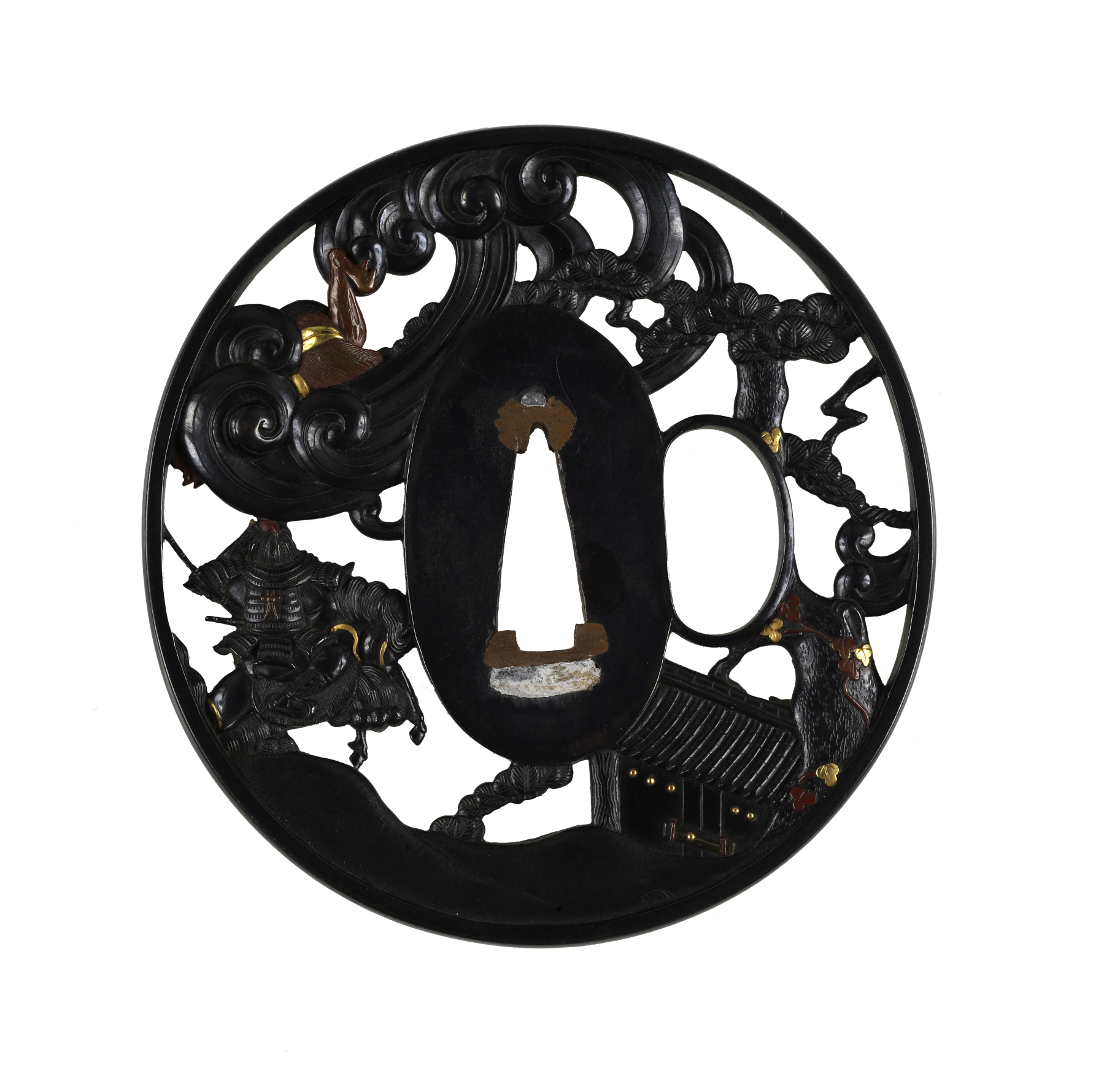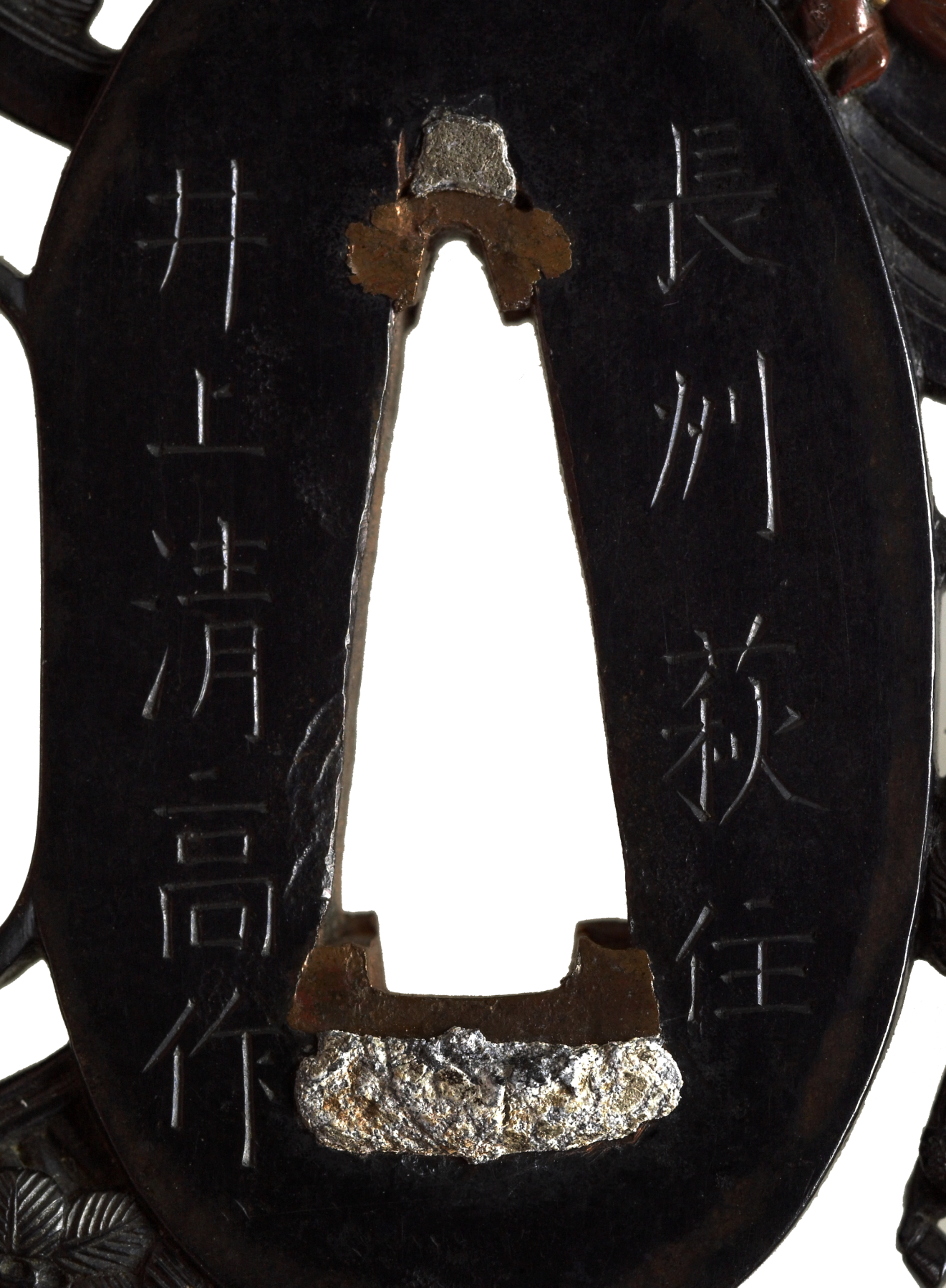Tsuba with the Samurai Watanabe no Tsuna Battling a Demon at Rashomon Gate
(Japanese Military Armor)
This tsuba shows Watanabe no Tsuna, a warrior who lived in the late 10th and early 11th century. One stormy night, he lay in wait at the Rashomon Gate in Kyoto for one of the last demons left in the city. In the middle of the night, he felt something tugging at his helmet. Striking out with his sword, he cut off the demon's arm. The demon ran away and Tsuna kept the arm locked in an iron box. On the tsuba, Tsuna can be seen riding his horse on the right. Above him, the demon pulls at his helmet. Storm clouds swirl above the demon. The Rashomon Gate is at the lower left, below the hole for the utility knife. The Rashomon Gate is the same gate that figures in Akira Kurosawa's famous film of that name.
Inscription
Provenance
Provenance (from the French provenir, 'to come from/forth') is the chronology of the ownership, custody, or location of a historical object. Learn more about provenance at the Walters.
Henry Walters, Baltimore [date and mode of acquisition unknown]; Walters Art Museum, 1931, by bequest.
Geographies
Japan, Hagi (Place of Origin)
Measurements
2 7/8 in. (7.3 cm)
Credit Line
Acquired by Henry Walters
Location in Museum
Not on view
Accession Number
In libraries, galleries, museums, and archives, an accession number is a unique identifier assigned to each object in the collection.
In libraries, galleries, museums, and archives, an accession number is a unique identifier assigned to each object in the collection.
51.169






